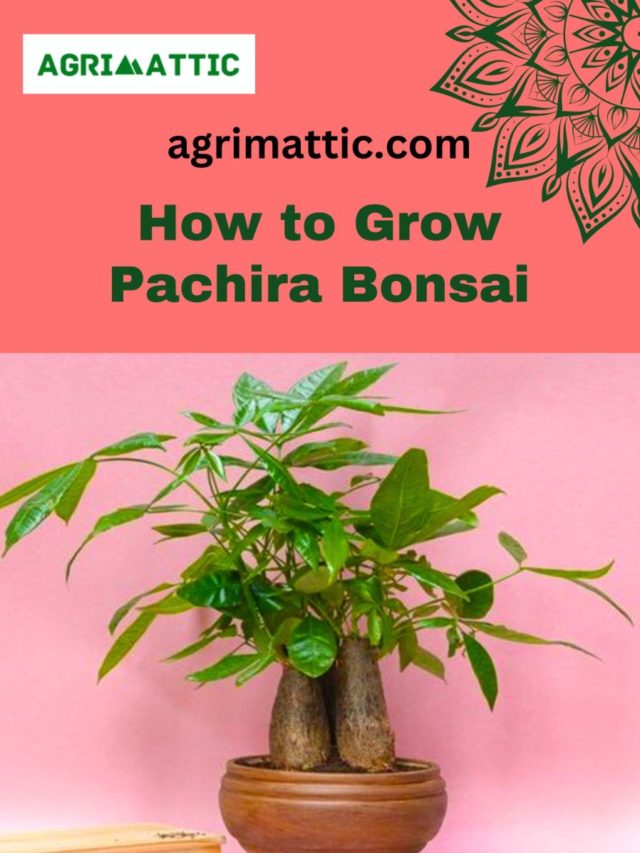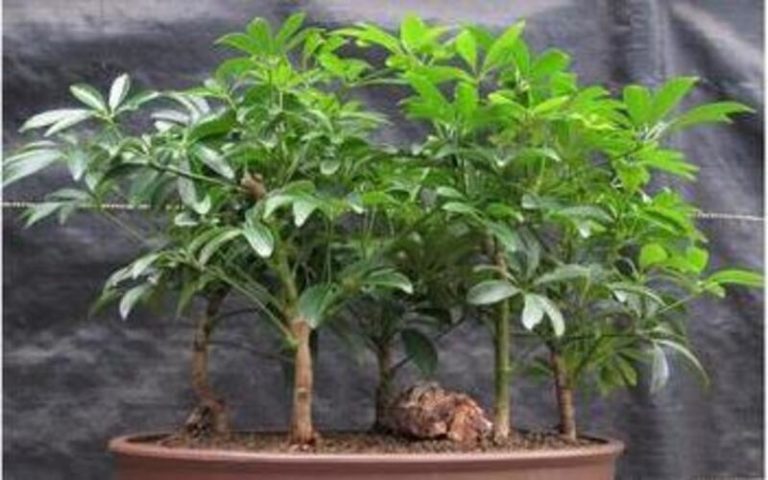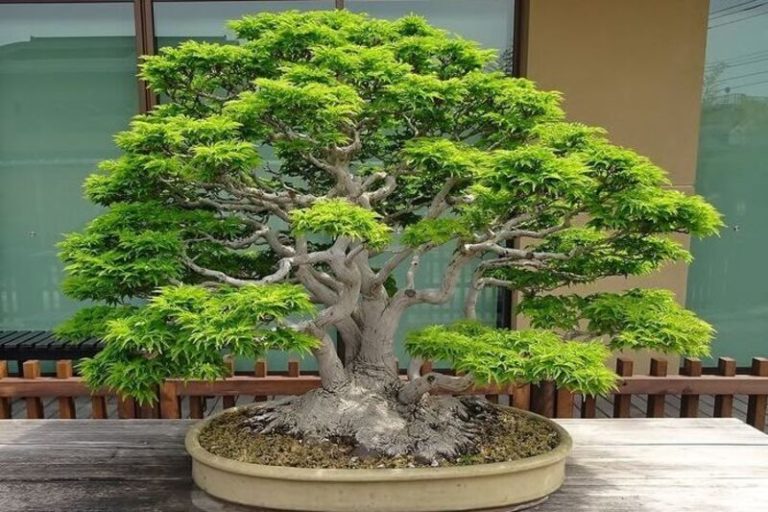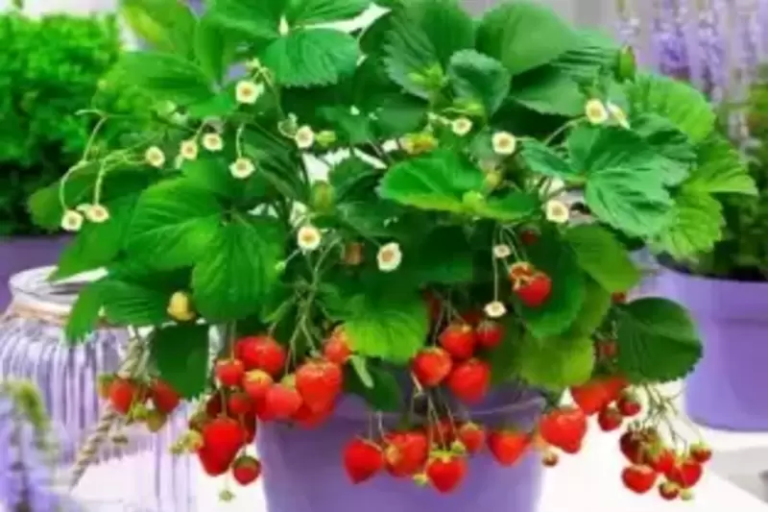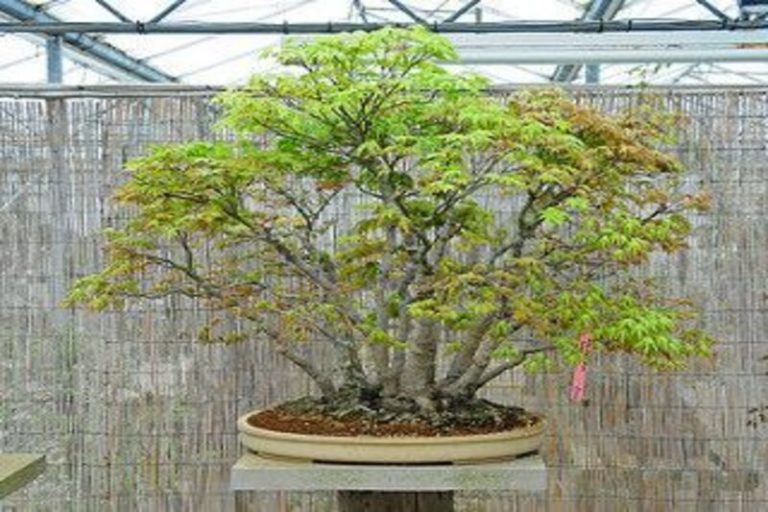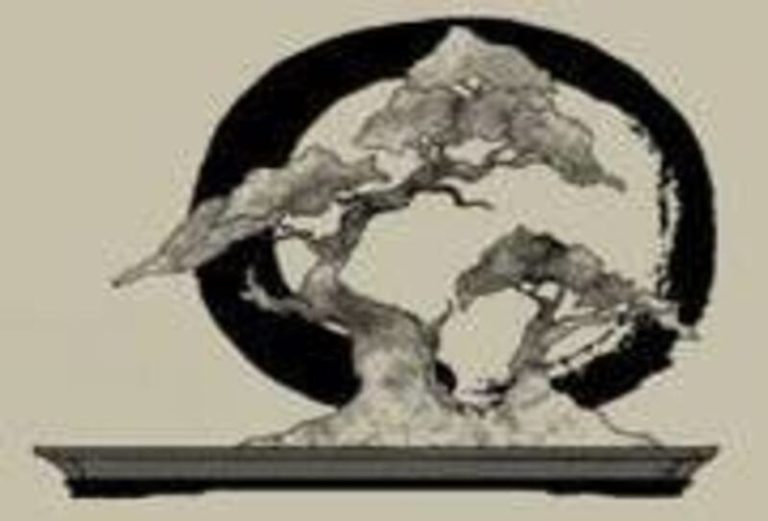Pachira Bonsai: The Captivating Charm of Bonsai in Your Home
Pachira bonsai, or Pachira aquatica, is a famous indoor bonsai tree that is known for having pretty leaves and being easy to take care of. People think that this tree will bring them luck and money. It is also called the “money tree.”
What is Pachira Bonsai ( Money Tree )?
Pachira bonsai is a small, managed form of the Money Tree (Pachira plant), which is often grown for good luck and wealth. It involves shaping the tiny tree so that it can fit in small pots and paying close attention to things like light, temperature, watering, and trimming to make sure the tree grows and looks its best. You can grow it inside or outside.
History and Origins of the Pachira Bonsai
The Pachira Bonsai comes from the larger practice of bonsai gardening, which began in China more than a thousand years ago and then spread to Japan. Bonsai is an art form that includes carefully caring for and shaping small trees to make beautiful, harmonious images of nature.
The Pachira plant is native to Central and South America. It usually grows in marshy areas like swamps and marshes. The species most often used for bonsai growth is Pachira aquatica, which is also known as the “Money Tree.” In many countries, the name “Money Tree” means luck and wealth, which makes it even more appealing as a bonsai tree.
The idea of growing Pachira as a bonsai probably came about when bonsai fans and gardeners wanted to use the cultural and spiritual meaning of the Money Tree in their work. Over the years, Pachira bonsai has become famous all over the world. Fans like its unique look, cultural meaning, and the task of growing a small version of this tropical tree.
Pachira Bonsai and Their Symbolism
The Pachira Bonsai holds considerable symbolic importance, as it originates from cultural beliefs linked to the Money Tree (Pachira aquatica). The following are frequent symbolic connotations ascribed to Pachira Bonsai:
Luck and Prosperity:
- In many countries, the Money Tree, which is often used to grow Pachira Bonsai, is thought to bring good luck and wealth.
- A lot of people put Pachira Bonsai in their homes and businesses in the hopes that it will bring them good luck and money.
Wealth and Abundance:
- People believe that the Money Tree’s many braided stems, which are popular in Pachira Bonsai, represent unity and plenty.
- People think that a tree can bring in more good energy and money if it has more knots or branches.
Feng Shui:
- In Feng Shui, pachira bonsai is often used because it is thought to improve the flow of chi (energy) and bring wealth.
- The plant’s five-lobed leaves are linked to the five elements in Feng Shui, which makes it even more positive.
Positive Energy and Well-Being:
- Pachira Bonsai is thought to bring good luck and health to the area around it, in addition to money.
- Its lush green leaves make people feel alive and growing, which adds to a general feeling of well-being.
Gifts of Fortune:
- People often give Pachira Bonsai as a gift at happy events like weddings, housewarmings, or business starts to wish the recipient luck and success.
- Its symbolic meaning makes it a thoughtful and meaningful present.
Pachira Bonsai have deep cultural meanings, but many people also like them for their good looks and the energy they are thought to bring into homes. The Pachira Bonsai has a special place in the world of bonsai gardening, whether it’s seen as a culture symbol or just as a pretty plant.
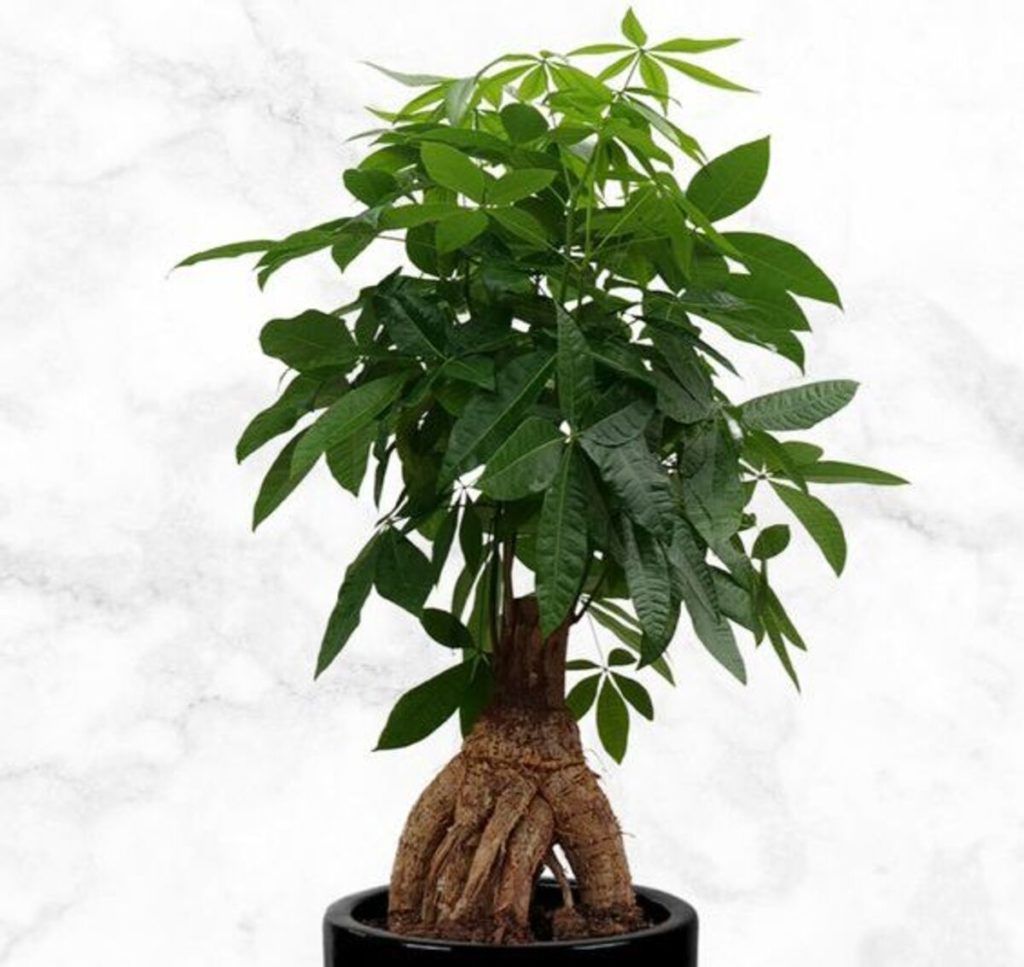
Characteristics of the Pachira Bonsai
The Pachira Bonsai, which comes from the Money Tree (Pachira aquatica), has special features that make it look and feel quite special. The Pachira Bonsai has these important parts:
- Braided Trunks: The Pachira Bonsai’s stems are often knotted or twisted, which makes it easy to spot. People think that this makes the tree’s symbolic meaning even stronger, since it stands for togetherness and plenty.
- Compound Leaves: Pachira bonsai has complex leaves, which means that each leaf is made up of several leaflets that are all connected to the same stem. Most of the leaves are bright green, which helps the tree look big and lush.
- Tolerance to Pruning: When pruned properly, Pachira bonsai trees can be shaped and styled into the shape that the fan wants. Pruning the bonsai on a regular basis helps it stay small and pushes it to grow more closely together.
- Small Size: The Pachira is grown as a bonsai so that it is much smaller than its wild cousin. Its small size makes it good for growing indoors and makes it look even better as a beautiful tiny tree.
- Able to grow both indoors and outdoors: Pachira bonsai can be grown both inside and outside, which gives fans who live in different places more options. When grown indoors, it’s important to make sure the tree gets enough light.
- Symbolic Significance: The Pachira Bonsai is often chosen for its spiritual meaning, in addition to its usefulness as a plant. This tree is linked to happiness, wealth, and good energy, which makes it a popular choice for bonsai growers who like the culture side of things.
- Tropical Origin: The Pachira plant comes from Central and South America and grows in warm areas. It can live inside, but it does best in places that are warm and wet.
- Green Foliage: Its bright green leaves are one of the things that makes Pachira Bonsai more attractive. The thick leaves form a cover that, when cared for properly, makes the bonsai look even better.
- Unique Styles: Pachira Bonsai can be made in a number of ways, such as the formal upright, relaxed upright, and cascade styles that are common in bonsai. Each tree is unique because of the style you choose.
- Pot Selection: It’s important to think about what kind of pot to get for your Pachira bonsai. It needs to be able to drain well, be the right size for the roots, and match the general look of the bonsai.
It is important to know these things about Pachira Bonsai in order to care for and enjoy them. For bonsai fans, growing and taking care of a Pachira Bonsai can be fun, whether they choose it for its symbolic meaning, its good looks, or a mix of the two.
How to Grow Pachira Bonsai
Growing a Pachira Bonsai requires paying close attention to its environmental requirements, doing regular maintenance, and recognizing the unique qualities of this tropical plant. Here’s how to cultivate a healthy and colorful Pachira Bonsai step by step:
1. Selecting Your Pachira Bonsai:
- Purchase a healthy Pachira Bonsai from a reputable nursery or bonsai supplier.
- Choose a tree with well-developed roots, vibrant foliage, and a shape that appeals to you.
2. Choosing the Right Pot:
- Select a well-draining bonsai pot with sufficient drainage holes to prevent waterlogging.
- Ensure the pot is appropriately sized, allowing for the tree’s growth while maintaining its bonsai proportions.
3. Potting and Soil:
- Use a well-draining bonsai soil mix or create a mix of loam, perlite, and organic matter.
- Repot the Pachira Bonsai every 2-3 years, preferably in the spring, to provide fresh nutrients and ensure healthy growth.
4. Light and Temperature:
- Place the Pachira Bonsai in a location with bright, indirect sunlight. It thrives in filtered sunlight but can tolerate some direct sunlight.
- Maintain a consistent room temperature between 65 and 75°F (18 and 24°C) to promote healthy growth.
5. Watering:
- Keep the soil consistently moist but not waterlogged. Allow the top inch of soil to dry before watering.
- Adjust the watering frequency based on the season, as Pachira Bonsai may need more water during warmer months.
6. Fertilizing:
- Use a balanced, water-soluble fertilizer during the growing season (spring and summer) every 2–4 weeks.
- Reduce or stop fertilizing during the fall and winter when the tree is in a dormant phase.
7. Pruning and Shaping
- Regularly prune the Pachira Bonsai to maintain its desired shape and size.
- Perform structural pruning in early spring and maintenance pruning throughout the growing season.
8. Wiring and Shaping Techniques:
- Use wiring techniques to guide the growth of branches and shape the overall appearance of the bonsai.
- Be gentle to avoid damaging the tree, and regularly check and adjust the wires as needed.
9. Pests and Diseases:
- Keep an eye out for common pests such as spider mites and scale insects.
- Treat any pest infestations promptly with appropriate insecticides, and ensure good ventilation to prevent fungal diseases.
10. Indoor vs. Outdoor Considerations:
- Pachira Bonsai can be grown both indoors and outdoors. If kept indoors, provide ample sunlight through windows or artificial lighting.
- If grown outdoors, protect the tree from extreme temperatures and ensure it receives appropriate sunlight.
By following these tips and paying attention to what your Pachira Bonsai needs, you can grow a beautiful, healthy little tree that takes up little room but has deep meaning for you.
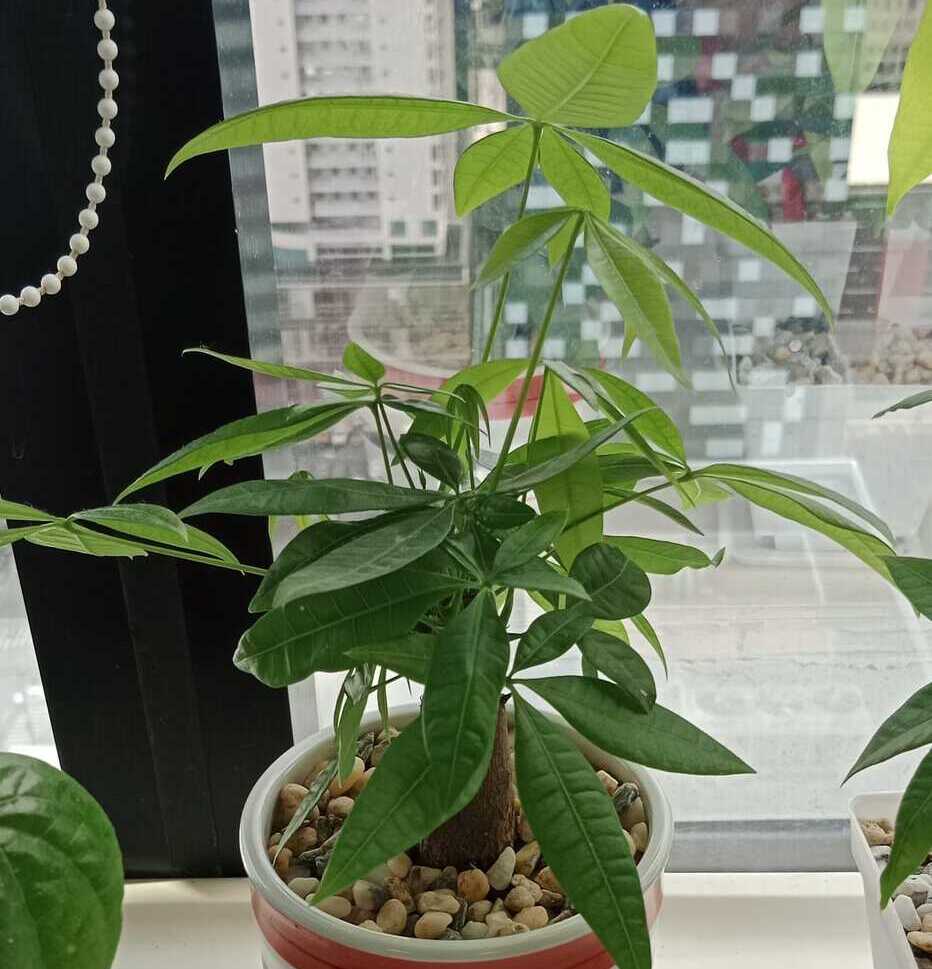
Displaying and Showcasing the Pachira Bonsai
When you put your Pachira Bonsai on display, you need to think carefully about how it looks, where it goes, and what it means to you. Here are some tips on how to show off your Pachira Bonsai in the best way:
1. Choosing the Right Location: Put your Pachira Bonsai somewhere that gets a lot of natural light. If you have an indoor bonsai, put it near a bright window so it can get some filtered sunshine. If you are outside, pick a spot that gets the right amount of sunshine for the tree.
2. Selecting a Suitable Bonsai Pot: Pick out a bonsai pot that goes with the style of your Pachira Bonsai. Think about how the pot’s color, shape, and size fit with the tree’s features.
3. Using Display Stands: Use a show stand to raise your Pachira Bonsai. It not only makes the view stand out more, but it also makes the area look better.
4. Putting together with other bonsai: You could put your Pachira Bonsai next to other bonsai trees. Putting bonsai together in a group can make a pretty show, especially if the trees are the same style and size.
5. Seasonal Decorations: Throughout the year, change the image to show how the seasons are changing. This can include seasonal decorations like small gifts or flowers that bloom only during certain times of the year to make the whole thing look better.
6. Accent Elements: Add small rocks, figures, or other small decorations to the base of the Pachira Bonsai to make it look more interesting. This can make the show more interesting and draw people in.
7. Using Bonsai Tables or Shelves: Get some bonsai shelves or tables to give your Pachira Bonsai a place to live. This not only makes the display look nicer and more organized, but it also makes sure that the tree is at eye level.
8. Rotating the Display: Moving your Pachira Bonsai around every so often is a good idea. This keeps the tree’s growth even and lets people see it from different points of view.
9. Showcasing Symbolic Items: If your Pachira Bonsai has a special meaning to you, you might want to add things to it that make that meaning stronger. This could include charms for good luck, signs of wealth, or culture items.
10. Regular Maintenance: Make sure the show area is clean and well-kept. It is important to keep the Pachira Bonsai looking healthy and happy by dusting the leaves often and pruning it as needed.
By carefully placing and showing off your Pachira Bonsai, you not only make it look better, but you also make a place that reflects the culture and aesthetic values of this one-of-a-kind bonsai type.
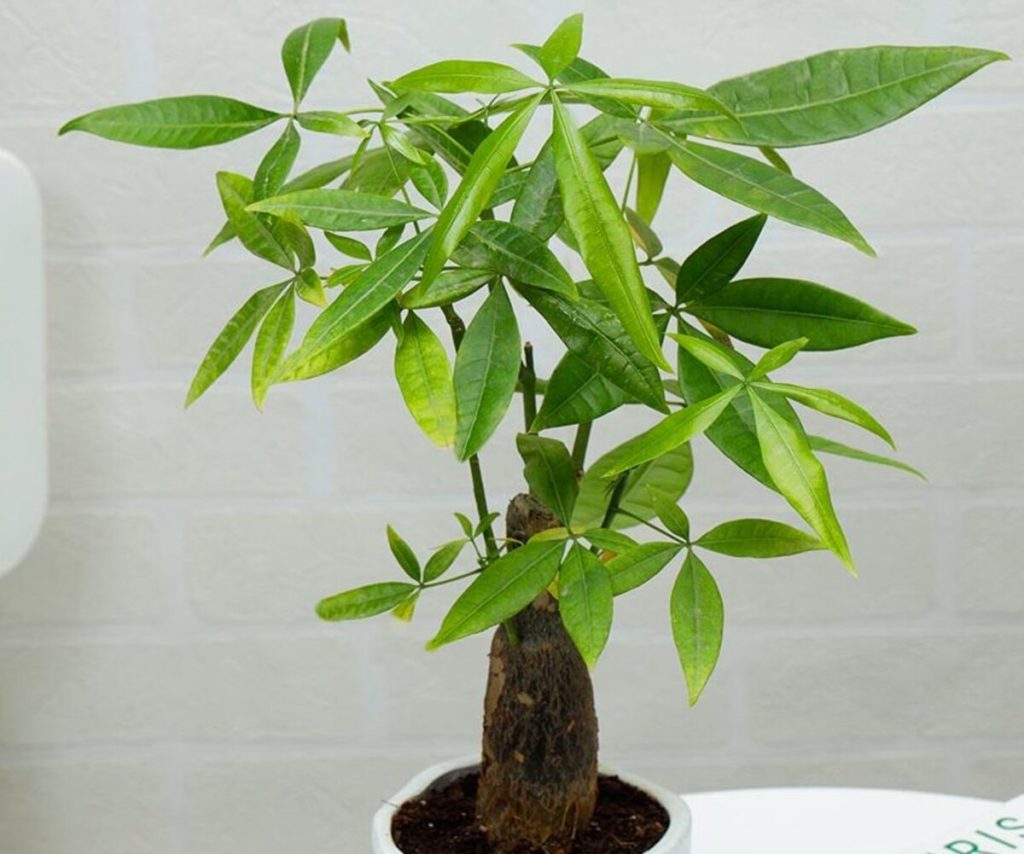
How to Care for and Maintain a Pachira Bonsai
To care for and keep a Pachira bonsai, you need to pay attention to many things, such as light, water, pruning, and the general environment. Here is everything you need to know to keep your Pachira Bonsai happy and healthy:
1. Light Requirements:
Put the Pachira Bonsai somewhere that gets bright, indirect sunlight. It can handle some straight sunlight, but don’t leave it out in the strong afternoon sun for too long.
If you keep it inside, make sure it gets enough natural light through windows. For even light spread, you might want to turn the tree every so often.
2. Watering:
Make sure the dirt is always damp, but not soaked. Before you water again, let the top inch of dirt dry out.
Depending on the weather, change how often you water your plants. When it’s warmer, Pachira Bonsai might need more water than when it’s cold.
3. Soil and Repotting:
Use a bonsai soil mix that drains well to make sure the roots get enough air.
Every two to three years or when you see the soil getting thin, you should repot the Pachira Bonsai. Most of the time, spring is the best time to repot plants.
4. Fertilizing:
Every two to four weeks during the growth season (spring and summer), use a balanced, water-soluble fertilizer.
Feeding the tree less or not at all in the fall and winter, when it is dormant, is best.
5. Pruning and Shaping:
Regular pruning will help your Pachira Bonsai stay the shape and size you want it to be. This includes getting rid of shoots, stems, and leaves that aren’t needed.
Early spring is a good time to do structural trimming, and the growing season is a good time to do maintenance cutting.
6. Wiring Techniques:
Wire can be used to shape the bonsai’s general look and direct the growth of its branches.
When you’re connecting, be careful not to damage the trees. Check the lines often and make any necessary adjustments to fit the tree’s growth.
7. Preventing Pests and Diseases:
Bugs like spider mites, scale insects, and aphids should be kept an eye out for. Use the right pesticides right away to get rid of any bugs.
To avoid fungus diseases, make sure there is good air. Don’t give the shrub too much water, and keep the area around it clean.
8. Temperature and Humidity:
The best temperature for Pachira Bonsai is between 65°F and 75°F (18°C and 24°C). Keep it away from drafts and quick changes in temp.
Even though it can survive indoors, keeping the air level moderate is best. You could use a humidity tray or mist the tree every once in a while.
9. Indoor vs. Outdoor Considerations:
It is possible to grow Pachira Bonsai both inside and outside. If it’s kept inside, make sure it gets enough light, and during the warmer months, think about putting it outside.
If you grow the tree outside, keep it away from high temperatures and make sure it gets enough sunshine.
10. Observing and Adjusting:
Check your Pachira Bonsai often for signs of stress, pests, or diseases. Change the way you care for people so that any problems can be fixed quickly.
Allow the tree to get used to changes in its surroundings and respond to your care by being patient and paying close attention.
By following these care tips, you can keep your Pachira Bonsai healthy and full of life, which will not only show off its unique features but also add color and meaning to your home.
Pachira Bonsai Care Sheet
| Aspect | Care Tips |
|---|---|
| Watering | Keep the soil consistently moist, allowing the top inch to dry between waterings. Adjust frequency based on environmental conditions. Avoid waterlogging, and use well-draining soil. |
| Sunlight | Provide bright, indirect sunlight. Pachira Bonsai can tolerate some direct sunlight, but avoid prolonged exposure to harsh afternoon sun. Rotate the tree for even light distribution. |
| Temperature | Maintain a consistent room temperature between 65-75°F (18-24°C). Protect the tree from drafts and sudden temperature changes. Adapt watering frequency to seasonal temperature variations. |
| Humidity | While adaptable to indoor conditions, maintain moderate humidity. Consider using a humidity tray or misting occasionally. |
| Fertilization | Apply a balanced, water-soluble fertilizer during the growing season (spring and summer) every 2-4 weeks. Reduce or stop fertilizing in the fall and winter during the dormant phase. |
| Pruning and Trimming | Regularly prune to maintain shape and size. Structural pruning in early spring and maintenance pruning throughout the growing season. Trim unwanted shoots, branches, and leaves. |
| Wiring and Styling | Use wiring to guide branch growth and shape the overall appearance. Be gentle to avoid damage. Regularly check and adjust wires as needed. Experiment with various bonsai styling techniques. |
| Repotting | Repot every 2-3 years or when soil becomes depleted, preferably in spring. Use a well-draining bonsai soil mix to ensure root health. |
| Pest and Disease Control | Keep an eye out for pests like spider mites and scale insects. Treat promptly with appropriate insecticides. Ensure good ventilation to prevent fungal diseases. |
| Winter Care | Adjust watering frequency during winter, allowing the soil to partially dry between waterings. Protect the tree from cold drafts. Consider moving indoor bonsai to a cooler but well-lit location. |
| Regular Maintenance | Observe the bonsai regularly for signs of stress, pests, or diseases. Adjust care practices accordingly. Be patient and allow the tree to adapt to changes in its environment. |
This care sheet gives you a quick rundown of the most important things you need to think about when growing and taking care of a Pachira Bonsai. Depending on the conditions where your bonsai is growing and its individual needs, you may need to make some changes.
Conclusion:
Taking care of a Pachira Bonsai is like having a friend that is green. It’s not hard, and with some care and love, you can have a cute tree that makes your room feel better. Have fun planting!
FAQ
- What is a Pachira Bonsai?
- A Pachira Bonsai is a small Money Tree (Pachira aquatica) that has been carefully grown and made to fit in a small pot. It is often grown because it is thought to bring happiness and wealth.
- Where can I buy a Pachira Bonsai?
- Pachira Bonsai can be bought from trusted nurseries, shops that specialize in bonsai, or online stores. Make sure the tree you pick is healthy and has strong roots.
- How do I care for my Pachira Bonsai?
- Give it bright, indirect sunlight, make sure the soil stays wet, and use soil that drains well. For shape, trim it often, feed it when it’s growing, and change how you care for it depending on the season.
- Can I grow Pachira Bonsai indoors?
- It is possible to grow Pachira Bonsai inside. Keep the room at a steady temperature and put it near a bright window that gets reflected sunlight. You might want to turn the tree so that it gets the same amount of light.
- How often should I water my Pachira Bonsai?
- When the top inch of dirt feels dry, water your Pachira Bonsai. Don’t let the soil get too wet; these plants like it constantly damp but not soaked.
- When and how should I fertilize my Pachira Bonsai?
- Every two to four weeks during the growth season (spring and summer), use a balanced, water-soluble fertilizer to feed your plants. When the tree is dormant in the fall and winter, cut back on or stop
- Can I shape and style my Pachira Bonsai?
- Yes, trimming and wires work well on Pachira Bonsai. Regularly cut off any shoots or stems that aren’t needed to keep the shape you want. To guide the growth and get certain styles, use wire methods.
- How do I prevent pests and diseases on my Pachira Bonsai?
- Keep an eye out for common pests like spider mites and scale insects. Treat infestations promptly with appropriate insecticides. Ensure good ventilation to prevent fungal diseases.
- When should I repot my Pachira Bonsai?
- Every two to three years or when you see the soil getting thin, you should repot your Pachira Bonsai. Most of the time, spring is the best time to repot plants. Use bonsai soil mix that drains well.
- Is there a specific meaning or symbolism associated with Pachira Bonsai?
- Yes, Pachira Bonsai, which comes from the Money Tree, is often linked to happiness, wealth, and good vibes. The tree’s braided stems and lush green leaves add to its metaphorical meaning.
Also Read:


